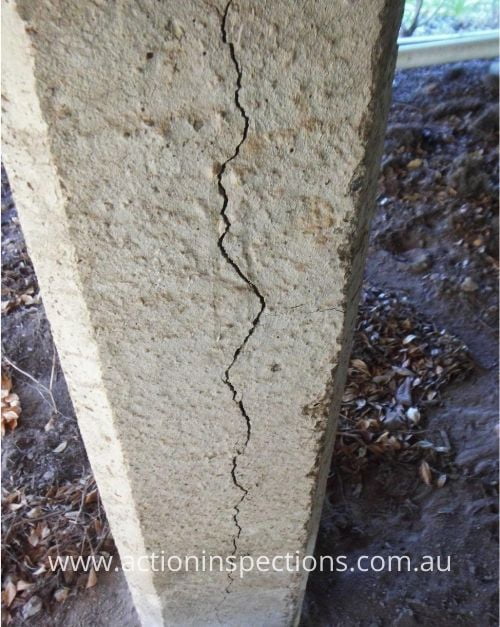Concrete Spalling in stumps needn’t be a dealbreaker
Queensland has many homes raised on stumps. An elevated home allows for cooling breezes to pass around and under the home – essential in homes built before the advent of air-conditioning. Traditional timber stumps are subject to termite attacks, so steel-reinforced concrete stumps are often used now.
Concrete stumps are incredibly strong and durable, but if ideal conditions aren’t met, they can become susceptible to concrete spalling. If the building report on your dream Queenslander finds concrete spalling, don’t panic. Here’s why spalling concrete needn’t be a deal breaker.
What is concrete spalling?
Concrete spalling is the deterioration of steel reinforced concrete, often caused by water damage through poor allotment drainage or prolonged water exposure. It’s especially noteworthy in flood or damp zones near rivers or creeks. It can also be caused by poor construction (steel reinforcement placed too close to the surface) or badly mixed weak concrete.
In the early stages, concrete spalling is characterised by deep cracks in the concrete. Concrete is strong but porous. As the steel in the concrete is exposed to moisture, it begins to rust and expand, blowing out the concrete into cracks. Once spalling has begun, it’s time for restoration and repair.
 Concrete spalling or concrete cancer?
Concrete spalling or concrete cancer?
Spotting the early signs of concrete spalling does not mean that the deterioration has progressed to concrete cancer. Congratulations! At this point it is entirely fixable.
Concrete cancer is the advanced stages of concrete spalling. When concrete cancer is evident, the stumps will be crumbling and structural integrity is lost. This is very dangerous in terms of potential house collapse and injury from falling concrete, and very expensive to repair. It’s vital that repairs and preventatives are carried out as soon as concrete spalling is identified – before it can progress to this stage.
What your building inspector looks for
Your building inspector can spot the signs of concrete spalling, even when attempts have been made to hide it. A properly carried out inspection can also identify potential causes, such as poor drainage, water pooling, and incorrect construction. This allows the best and most permanent solution to be recommended.
Concrete spalling does not have to be a dealbreaker. Minor spalling damage is repairable, and you may be able to negotiate some of the costs in your purchase contract. If the spalling damage has become significant, stump replacement will be required. This will involve more significant renegotiations. You can have the home of your dreams AND the security that it will remain standing for a very long time.

